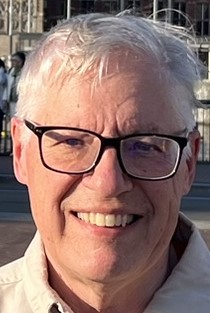How Did Montrose Get Its Name? – Part 1
From Mike Lawler: Local historian Robert Newcombe is an expert on the history of Montrose. I am giving my next four columns to him so he can write on these mysteries of Montrose’s origins: How did Montrose get its name (parts 1 & 2)? Where did its water come from? Are the streets really laid out in the pattern of a rose?
Here’s Robert:
The common adage is that history is written by the victors but it’s also written by numbskulls like me who, writing years after the events in question with no definitive evidence, must make educated guesses about what happened. Twelve years ago, I wrote a book for Arcadia Publishing on Montrose called, oddly enough, “Montrose” with the understanding that I would submit everything to them in only eight weeks instead of its customary six months. While writing it, I came across three questions that I could not find answers to in those eight weeks. In June of this year, I gave a presentation to the Historical Society of the Crescenta Valley on what I called the Mysteries of Montrose Origins. This and next week’s guest column summarize my presentation of the first mystery: Where did the name Montrose come from?
For the past 110 years or so, local historians have referred to Grace J. Oberbeck’s book “History of La Crescenta-La Cañada Valleys” published in 1938 as the story of how Montrose got its name. However, it’s ridiculous that this has become the bible of the history of Montrose, considering her actual text says she doesn’t know why the name was Montrose was picked. It could be that her writing is so flowery that readers didn’t understand, “Contests concerning the name are still being held” and “We think it would be very interesting to know the story of the prized lot” are her way of saying, “I don’t know how Montrose got its name, but I would love to know.”
She does start with a definitive bit of history: “The firm of Holmes and Walton … held a contest and gave a lot as a prize for the best name submitted for the town they were starting.” She wrote this book less than 25 years after the actual events.
Many people in this area had lived through this history and could tell her what happened. Developer Robert Walton lived nearby in Glendale but apparently she didn’t know that and didn’t contact him. She also didn’t know that Frederick Holmes had sold his share of their real estate company to Walton in 1908 so Holmes was not involved at all in the development of what would become Montrose, though there are many references to “developers Holmes and Walton” in histories of Montrose. (Yes, I’ve done it too.)
When I started writing the book in 2012 some local historians questioned the veracity of Montrose being named by a contest since, up to that point, there was no actual evidence of a contest having taken place.
While I had the distinct disadvantage of not being able to interview anyone who had lived through the birthing of Montrose, I did have some technological advantages over Grace Oberbeck, starting with microfilm. I was able to review old copies of the LA Times at the downtown public library and I finally found one of the ads announcing the contest. This ad ran in early December 1912, and the follow-up ad announcing the contest results ran on Dec. 29, 1912. Less than two months later, Walton hosted a barbeque on Feb. 22, 1913 that he described as the “opening day” of Montrose.
The ad did not say why the name Montrose was chosen. While Grace Oberbeck wrote that the developers selected the name Montrose as being “the most appropriate,” this ad did not say that. The closest the ad said is that “9 Clever Contestants Submitted the name Montrose.” Apparently, the thousands of other contestants who submitted other names were not clever.
The ad listed the names and addresses of those nine clever people and they picked one winner from the nine, presumably by using some random method like drawing names out of a hat. The winner chose cash instead of a lot. The ad also listed the five judges and where they worked!
While finding these ads answered “how” Montrose got its name, they did not answer the question of why the name Montrose was chosen. In my next column, I hope to solve this mystery.

